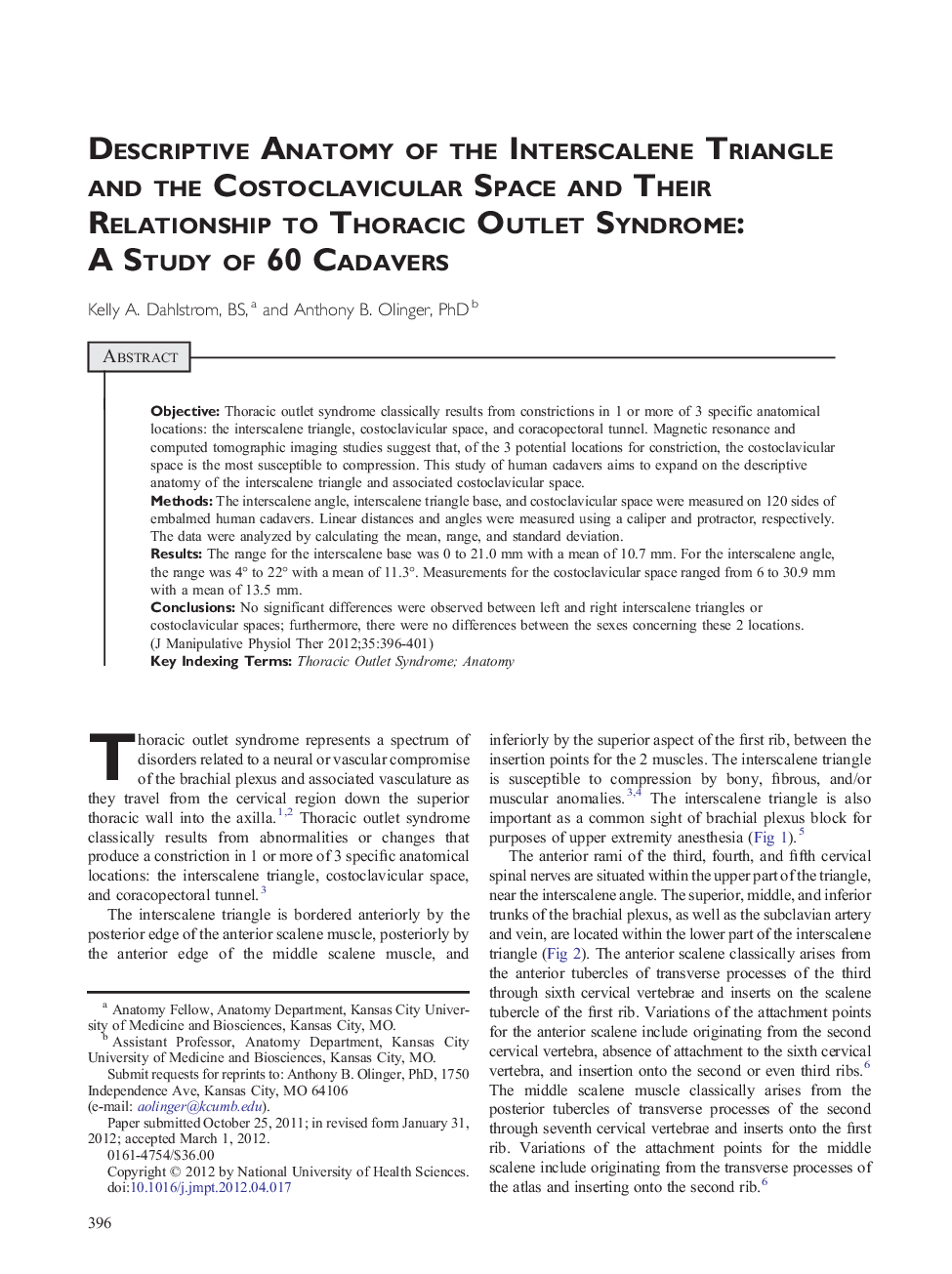| Article ID | Journal | Published Year | Pages | File Type |
|---|---|---|---|---|
| 2620902 | Journal of Manipulative and Physiological Therapeutics | 2012 | 6 Pages |
ObjectiveThoracic outlet syndrome classically results from constrictions in 1 or more of 3 specific anatomical locations: the interscalene triangle, costoclavicular space, and coracopectoral tunnel. Magnetic resonance and computed tomographic imaging studies suggest that, of the 3 potential locations for constriction, the costoclavicular space is the most susceptible to compression. This study of human cadavers aims to expand on the descriptive anatomy of the interscalene triangle and associated costoclavicular space.MethodsThe interscalene angle, interscalene triangle base, and costoclavicular space were measured on 120 sides of embalmed human cadavers. Linear distances and angles were measured using a caliper and protractor, respectively. The data were analyzed by calculating the mean, range, and standard deviation.ResultsThe range for the interscalene base was 0 to 21.0 mm with a mean of 10.7 mm. For the interscalene angle, the range was 4° to 22° with a mean of 11.3°. Measurements for the costoclavicular space ranged from 6 to 30.9 mm with a mean of 13.5 mm.ConclusionsNo significant differences were observed between left and right interscalene triangles or costoclavicular spaces; furthermore, there were no differences between the sexes concerning these 2 locations.
